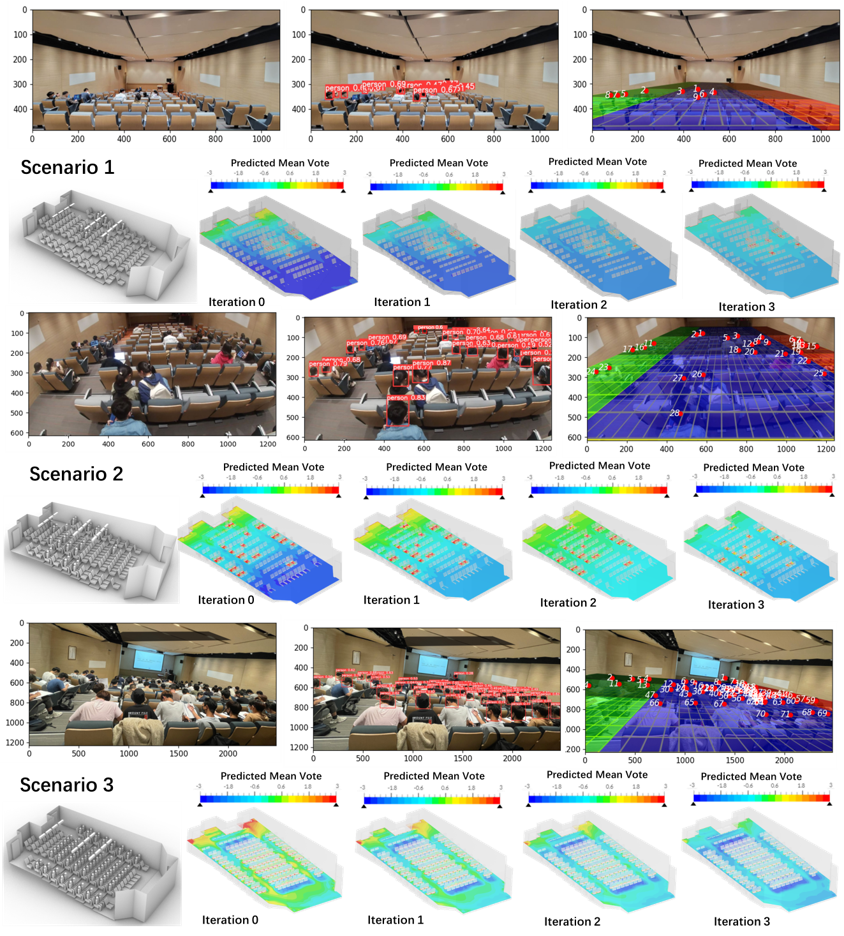Computer vision-based smart HVAC control system
Publications:
Lan, H., Hou, H. (Cynthia), Gou, Z., Wong, M. S., & Wang, Z. (2023). Computer Vision-based SMART HVAC Control System for university classroom in a subtropical climate. Building and Environment, 242, 110592. https://doi.org/10.1016/j.buildenv.2023.110592
To respond to the increasing demand for a comfortable, productive and energy efficient study environment, the application of artificial intelligence technologies in the smart control of Heating, ventilation, and air conditioning (HVAC) systems plays an increasingly important role. This research uses a classroom, equipped with a traditional central HVAC system, in Hong Kong as a case study to demonstrate an innovative approach for a more intelligent and efficient HVAC system. Through a field investigation (i.e. measurement and questionnaire) and Computational Fluid Dynamics (CFD) simulation, it is found that the number and spatial location of students have a significant impact on their thermal comfort. Applying a computer vision model (YOLOv5) detected dynamic occupant information (variations in student numbers and locations) in a classroom, the SimScale (a cloud-native simulation platform) was then used to estimate the current thermal comfort state (predicted mean vote, PMV) and change in PMV (ΔPMV) of students in the classroom. Furthermore, a fuzzy logic control system is implemented to adjust air temperature and air velocity based on the simulation results. Preliminary scenario analysis has proven the feasibility of the proposed smart HVAC system for classrooms, as well as its ability to provide better quality of thermal comfort with more robust control. This study contributes to the smart and low-carbon retrofitting of university buildings with traditional central HVAC systems, while also serving as a benchmark for the energy-efficient transformation of HVAC systems in other types of indoor spaces.



